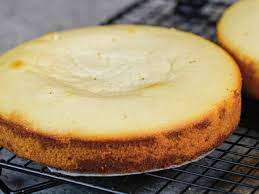
How to Cool Your Freshly Baked Cake: Expert Tips
Cake baking is a delightful experience, but ensuring it cools properly is crucial to achieving that perfect taste and texture. In this comprehensive guide, we will explore various methods and best practices for how to cool your freshly baked cake. Whether you’re a novice baker or a seasoned pro, these tips will help you master the art of cake cooling.
How to Cool a Cake: The Basics
Let’s begin with the fundamentals of cooling a cake. Proper cooling is essential to prevent the cake from becoming too moist or collapsing under the weight of frosting.
Room Temperature Cooling
Allow the cake to cool in the pan for about 10–15 minutes after taking it out of the oven. Then, gently run a knife around the edges to loosen it from the pan. Invert the pan onto a wire rack, tapping the bottom to release the cake. Let it cool completely at room temperature.
Freezer Cooling
If you’re short on time, consider cooling your cake in the freezer. Place the cake in the freezer for 15–20 minutes, ensuring it’s well-covered to prevent freezer burn. This method can help set the cake quickly, making it easier to frost.
Refrigerator Cooling
Refrigerating your cake is another option. Allow it to cool in the pan for 10 minutes, then transfer it to the fridge for about 30 minutes. This method works well for preventing a crumbly texture when frosting.
Best Way to Cool a Cake Before Frosting
Achieving a perfectly cooled cake before frosting is an art. Here are some advanced techniques to ensure your cake is ready for its frosting debut.
Cake Layers
If you’re working with multiple cake layers, place parchment paper between them and wrap them in plastic wrap. Chill them in the refrigerator for an hour or more. This will make frosting smoother and prevent crumbs from mixing in.
Speeding up the Process
To speed up the cooling process, consider cutting your cake into smaller sections or layers. This allows heat to escape more quickly and ensures even cooling.
How Long to Cool Cake in Fridge Before Frosting
The ideal time to cool a cake in the fridge before frosting is around 30 minutes to an hour, depending on the cake’s size and density. A moist, spongy cake may need more time, while a denser cake may require less.
Cooling Cakes: Troubleshooting Common Issues
Even the most skilled bakers encounter challenges when cooling cakes. Let’s troubleshoot some common issues and solutions.
Sinking in the Middle
If your cake sinks in the middle after cooling, it might be underbaked. Make sure you follow the recommended baking time and use an oven thermometer for accuracy.
Cracked Cake
Cracks can occur due to rapid temperature changes. Avoid moving your cake from extreme heat to extreme cold too quickly. Gradual cooling is key.
Sticky Texture
A sticky texture often results from underbaking. Additionally, too much moisture in the cake can cause stickiness. Check the cake’s doneness with a toothpick to avoid this issue.
FAQs
Q: Can I cool my cake outside during the winter?
A: Yes, you can. Just ensure it’s covered to prevent debris or insects from settling on it.
Q: Is it safe to cool a cake in the fridge if I use a glass baking pan?
A: Yes, it’s safe as long as the glass pan is heat-resistant. Avoid extreme temperature changes to prevent cracking.
Q: Should I cool my cake with or without the frosting?
A: Always cool the cake before applying frosting. This prevents the frosting from melting or sliding off.
Q: Can I cool a cake overnight in the fridge?
A: Yes, you can. Cover it well to prevent it from absorbing any odors from the fridge.
Q: Why did my cake become dry after cooling?
A: Overbaking can lead to a dry cake. Ensure that you follow the recommended baking time.
Q: Can I use a fan to cool my cake faster?
A: Yes, you can. A gentle fan can help speed up the cooling process, but avoid direct airflow to prevent uneven cooling.
Conclusion
Mastering how to cool your freshly baked cake is essential for perfect taste and texture. Whether you choose to cool it at room temperature, in the fridge, or in the freezer, following these tips and troubleshooting common issues will ensure your cakes turn out delicious every time. Happy baking!